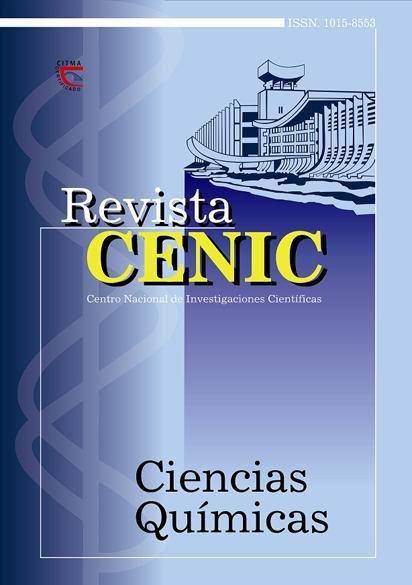Influence of the concentration of minor components on the stability and biofunctionality of a chemically cured dental resin
Abstract
The employment of polymeric materials as sealants for pits and fissures allows to prevent dental caries with high cost-profit ratio. These products are offered as monomer mixes to be set on the molar and premolar faces are introduced by self in pits and fissures for polymerizing in situ. By this way, is possible to obtain very thin polymeric films which seal and isolate the most vulnerable parts of dental anatomy obstructing the buccal microbial development. CUBRIDEM is a self-cured sealant for pits and fissures, which is supplied in two portions: a "Base" and a "Diluent". Working and setting times of this sealant at 23 °C agree with international standards and CUBRIDEM remains stable by one year minimum, when stored at 2-8 °C. This work deals with the obtainment of a stable CUBRIDEM at higher storage temperatures, characterized by suitable working and setting times in tropical climates. Experimental work was carried out according to 23 factorial designs, where the influence of minor components: benzoylperoxide (PB), N,Ndimethyl-p-toluidine (DMPT) and hydroquinone monomethyl ether (MQH) was studied while keeping monomeric composition unchanged( bis-GMAIDMTEG:1 /l).The new formulation, introduces changes in Diluent (0.8 % PB and 0.05 % MHQ) and Base (0.6 % DMPT) compositions. Therefore, working times longer than 35 s and setting times smaller than 140 s are obtained, when CUBRIDEM is handled at (30 ± 2) °C and stored no more than two months at the same temperature. Furthermore, storage at (16 ± 2) °C produces similar results for longer periods of times.

Downloads
Published
How to Cite
Issue
Section
License
Copyright (c) 2001 Copyright (c) 2001 Revista CENIC Ciencias Químicas

This work is licensed under a Creative Commons Attribution-NonCommercial-ShareAlike 4.0 International License.
Los autores que publican en esta revista están de acuerdo con los siguientes términos:
Los autores conservan los derechos de autor y garantizan a la revista el derecho de ser la primera publicación del trabajo al igual que licenciado bajo una Creative Commons Atribución-NoComercial-CompartirIgual 4.0 que permite a otros compartir el trabajo con un reconocimiento de la autoría del trabajo y la publicación inicial en esta revista.
Los autores pueden establecer por separado acuerdos adicionales para la distribución no exclusiva de la versión de la obra publicada en la revista (por ejemplo, situarlo en un repositorio institucional o publicarlo en un libro), con un reconocimiento de su publicación inicial en esta revista.
Se permite y se anima a los autores a difundir sus trabajos electrónicamente (por ejemplo, en repositorios institucionales o en su propio sitio web) antes y durante el proceso de envío, ya que puede dar lugar a intercambios productivos, así como a una citación más temprana y mayor de los trabajos publicados (Véase The Effect of Open Access) (en inglés).













